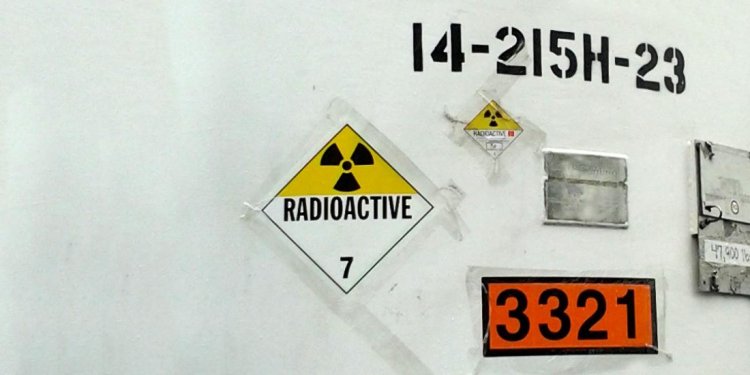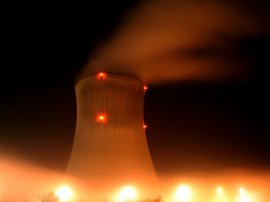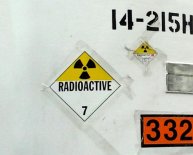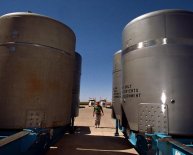
Nuclear Waste Disposal Problems
 Nuclear has long been considered a great way to generate the power that lights and heats our homes. It can generate electricity without greenhouse gas emissions. However, after a few terrible disasters in Nuclear power plants around the world, people have become more and more aware that, when not treated carefully, nuclear power poses rather a significant threat to our way of life. There also have been safety and health concerns involved in storing nuclear (radioactive) waste. Luckily, though, in recent years the safety precautions of working nuclear power plants have become more and more strict and they are now incredibly safe. However, they still generate tons of very hazardous waste material each and every year, material that is difficult to shift.
Nuclear has long been considered a great way to generate the power that lights and heats our homes. It can generate electricity without greenhouse gas emissions. However, after a few terrible disasters in Nuclear power plants around the world, people have become more and more aware that, when not treated carefully, nuclear power poses rather a significant threat to our way of life. There also have been safety and health concerns involved in storing nuclear (radioactive) waste. Luckily, though, in recent years the safety precautions of working nuclear power plants have become more and more strict and they are now incredibly safe. However, they still generate tons of very hazardous waste material each and every year, material that is difficult to shift.
Humanity has nearly suffocated the globe with carbon dioxide, yet nuclear power plants that produce no such emissions are so mired in objections and obstruction that, despite renewed interest on every continent, it is unlikely another will be built in the United States.
~ Michael Specter
More from the nuclear energy:
Nuclear waste disposal or radioactive waste management is an important part of nuclear power generation and there are a number of very important and strict guidelines that have to be followed by nuclear power plants and other companies to ensure that all nuclear waste is disposed of safely, carefully and with as little damage as possible to life (whether animal or plant). The amount of radioactive material that is left over from nuclear power plants, however, is luckily very small compared to the waste produced by other methods of generating energy, for instance burning coal or gas, but it can be expensive and it must be done absolutely right.
Dangers of Nuclear Waste disposal
Usually, when nuclear waste is disposed of, it is put into storage containers made of steel that is then placed inside a further cylinder made of concrete. These protective layers prevent the radiation from getting outside and harming the atmosphere or generally surroundings of the nuclear waste. It is a relatively easy and inexpensive method of containing very hazardous materials and actually does not need special transportation or to be stored in a particularly special place, for instance. However, there are a number of dangers that surround nuclear waste disposal.
1. Long Half Life: The products of nuclear fission have long half lives, which means that they will continue to be radioactive – and therefore hazardous- for many thousands of years. This means that, if anything were to happen to the waste cylinders in which nuclear waste is stored, this material can be extremely volatile and dangerous for many years to come. Since hazardous nuclear waste is often not sent off to special locations to be stored, this means that it is relatively easy to find, and if anyone with ill intent were to look for nuclear waste to serve unpleasant purposes, they may well be able to find some and use it.
2. Storage: Another problem with nuclear waste disposal that is still being discussed today is the issue of storage. Many different storage methods have been discussed throughout history, with very few being implemented because of the problematic nature of storing such hazardous material that will remain radioactive for thousands of years. Amongst the suggestions that were considered as above ground storage, ejection into space, ocean disposal and disposal into ice sheets.
Of these, only one was implemented – ocean disposal was actually used by thirteen different countries and was the method of dumping radioactive waste into the oceans in order to get rid of it. Understandably, this practice is no longer implemented.
3. Affects on Nature: One of the biggest concerns that the world has with the disposal of nuclear waste is the affect the hazardous materials could have on animals and plant life. Although most of the time the waste is well sealed inside huge drums of steel and concrete, sometimes accidents can happen and leaks can occur. Nuclear waste can have drastically bad effects on life, causing cancerous growths, for instance, or causing genetic problems for many generations of animal and plants. Not disposing of nuclear waste properly can therefore have huge environmental impacts that can harm many millions of animals and hundreds of animal species.
Effects of Nuclear Waste Disposal
If disposed of properly, nuclear waste disposal need not have any negative effects. Instead, nuclear waste can lie in its storage place for many thousands of years until it is no longer radioactive and dangerous without being disturbed. However, if the nuclear waste is improperly disposed of or if the disposal methods are compromised, there can be serious consequences and effects of nuclear waste disposal.
1. Accidents: Although most of the time a lot of emphasis is placed on the safe disposal of nuclear waste, accidents do occur. Throughout history there have unfortunately been a number of examples of times where radioactive material was not disposed of in the proper ways. This has resulted in a number of disastrous situations, including nuclear waste being spread by dust storms into areas that were populated by humans and animals and contaminated of water, whether ponds, rivers or even the sea. These accidents can have disastrous knock on effects for the animals that reside in or around these areas or that rely on the water of lakes or ponds to survive.
Drinking water can become contaminated, too, which is absolutely disastrous for locals and residents close to the epicenter of the disaster. Even if nuclear waste just seeps into the ground, it can eventually get into reservoirs and other water sources and, from there, can reach the homes of people who unwittingly drink high radioactive material. There are examples of these sorts of accidents from all over the world and from all time periods, with severe accidents happening very rarely but having a huge effect on very many people.
2. Scavenging: A particularly bad problem in developing nations, people often go scavenging for abandoned nuclear waste that is still radioactive. In some countries there is a market for these sorts of scavenged goods, which means that people will willingly expose themselves to dangerous levels of radiation in order to make money. Unfortunately, however, radioactive materials can be highly volatile and cause a number of problems.
Usually, people who scavenge these sorts of materials will end up in hospital and may even die of problems related to or caused by the radioactive materials. Unfortunately, once someone has been exposed to nuclear waste, they can then expose other people who have not opted to go scavenging for nuclear waste to radioactive materials.
3. Transportation: Transporting nuclear waste from power plants can occasionally result in problems. If poor shipping casks are used for the containment of radioactive material, for instance, then a slight knock or bump or even crash could cause the contents to spill and affect a wide radius. Despite all the cautions that are put into place when transporting nuclear waste, accidents still occur and can have a devastating effect on all those in the vicinity of the crash.
4. Health Effects: The biggest concern is the negative effects that can have on the human body when exposed to radiation. Long term effects to radiation can even cause cancer. It is interesting to know that we are exposed to radiations naturally by living our lives that comes from the ground below us. Radiation can cause changes in ‘DNA’ that ensures cell repair.

















